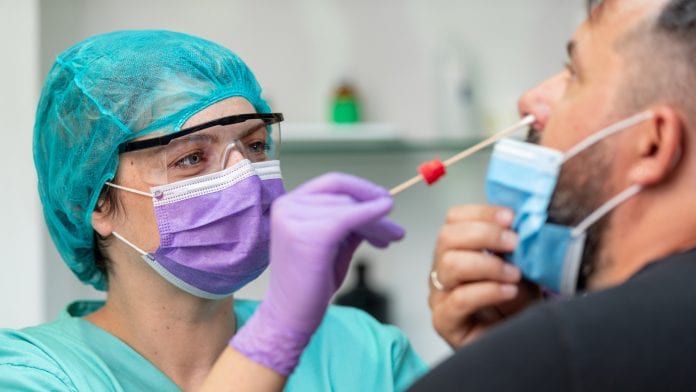
A team of scientists have generated an innovative system to accelerate COVID-19 testing times for healthcare workers.
The team, comprised of scientists from the University of Manchester, have produced a novel COVID-19 strategy that boosts the number of negative results from a singular round of testing, making faster notification results – mitigating the requirement of limited test reagents.
A rapid testing strategy is paramount to successfully combatting the coronavirus pandemic; such methods alleviate transmission rates in hospitals and care facilities to help maintain sufficient staffing numbers. Group strategies such as this that employ group samples have been experimented with before, albeit not on this scale.
Graeme Black, the lead investigator from the Division of Evolution and Genomic Sciences, School of Biological Sciences, University of Manchester, said: “One of the main hurdles to initiating a comprehensive hospital staff testing program is the large number of staff requiring testing and the rapid turnaround times that would be required to make any screening strategy successful.”
Comparing the strategies
Dorfan sequential (DS) pooling – the conventionally used method – amalgamates multiple samples, continuing testing if a pool tests back positive, which subsequently means that even individual healthcare workers who test negative would still be required to isolate. In the alternative nonadaptive combinatorial (NAC) pooling approach, the sample is tested in several simultaneously assayed pools, with the algorithm assuming that each sample is positive. Next, the algorithm attempts to disprove the assumption by discovering a well in which the sample has been placed that has tested negative. Finally, another algorithm is implemented to locate positive wells containing a single sample on the list of remaining positive samples, with indeterminate samples being subjected to retests.
The desired limit of detection for pooling was determined by placing nasopharyngeal samples of known SARS-CoV-2 status in two pools, with both containing 14 SARS-CoV-2 negative samples and one SARS-CoV-2 positive sample, with these maintaining varying viral loads. Pooling matrices were then created for 700, 350, and 250 samples, assigned to two, four, and five wells, respectively – with them also subjected to a DS testing scheme. Each of the matrices was tested for efficacy under different SARS-CoV-2 prevalence levels of 0.1%, 3%, 7%, and 10% of the population.
The results demonstrated that each of the NAC matrices performed well at low prevalence levels, averaging 585 tests saved per assay in the 700-sample matrix. Furthermore, all the NAC matrices demanded fewer retests than the DS testing scheme, displaying 0.1% to 3% in simulations of low-to-medium prevalence levels – with the performance for each matrix increasing with population prevalence simultaneously.
Professor Black said: “Pooling becomes increasingly useful as the population prevalence of SARS-CoV-2 decreases. Initially, the most conservative matrix, 250 samples, should be used to determine the prevalence level. As the prevalence falls, the use of less tolerant but higher throughput assays could be used, such as the 700-sample pool.
“Many high-throughput testing schemes for SARS-CoV-2 detection have been developed over the past year. We illustrate the potential power that adaptable, automated, innovative mathematical approaches have to increase COVID-19 diagnostic capability safely. Such an approach could reach far greater numbers, save lives, and be delivered sustainably. Undoubtedly, this has considerable relevance to other future population-based screening approaches.”








